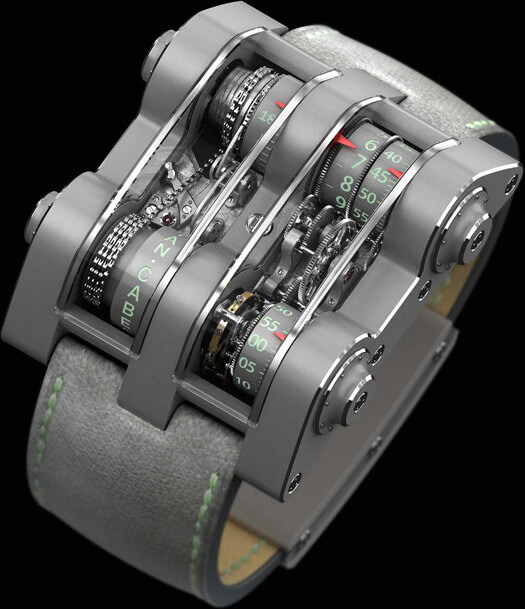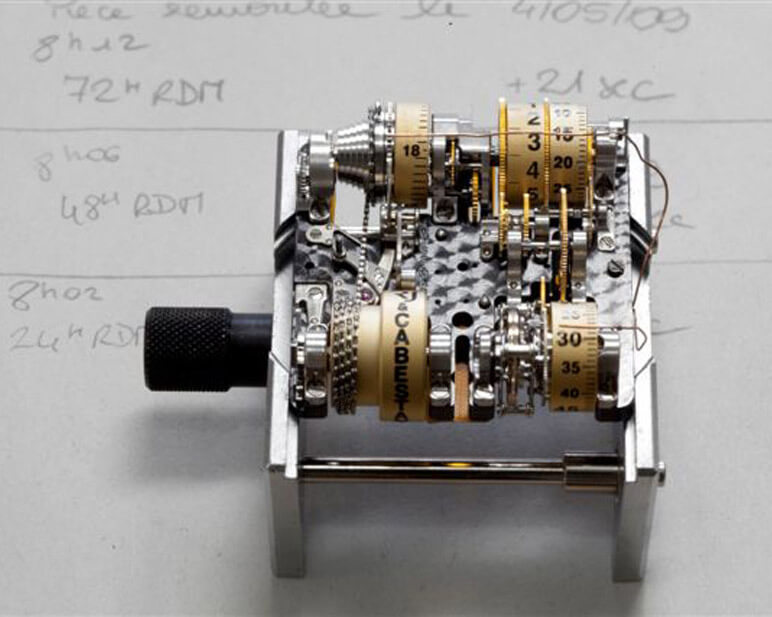Watch engineer Jean-François Ruchonnet threw his overwhelming, overriding passion for beautiful mechanics into the utterly atypical concept of a vertical movement driven by a fusee and chain. As such, it sits perfectly with his horological ideal of a trilogy of watches which explore three mechanical concepts, each associated with an element: earth and motor sports (Tag Heuer V4), water and sailing (Cabestan), air and aviation (Winglet, under development).
Inspiration for the Cabestan came directly from the world of yachting. The image that came to Jean-François Ruchonnet’s mind was of a vertical winch system, manoeuvred by a crank, that multiples force. As he explains, “this system produces enough force to hoist and adjust a sail or raise the anchor. The image of a chain, pulled by the anchor, crossing the deck before plunging into the sea is behind the Cabestan Winch Tourbillon Vertical.”
Enthusiasm and scepticism
The project, though ambitious, took form thanks to the combined efforts of Jean-François Ruchonnet and watchmaker Vianney Halter. The first prototype was unveiled in 2007 after a long gestation. Charting a new course in watchmaking, this explosive, innovative concept was greeted with enthusiasm as well as scepticism. Rarely had a wristwatch so challenged our presumptions with the architecture of its form and movement. There is no dial. Instead, hours, minutes, seconds and power reserve are displayed on four rotating aluminium drums, mounted on ball-bearings, at the four “corners” of the movement. In a display of unprecedented technical virtuosity, a vertical one-minute tourbillon is placed next to the seconds drum. Equally breathtaking is the Cabestan’s chain which provides constant torque to the movement. Comprising no fewer than 450 steel links and 150 rivets, it takes a full 40 hours to assemble by hand. This chain, which is driven by the barrel, winds around a fifth drum, thereby vertically crossing the entire mechanism.
The yachting metaphor truly comes to the fore in the watch’s winding and hour-setting system. A tiny crank, which the rest of the time fits seamlessly into the folding buckle, locks onto a capstan to connect directly with the fusee. Fully-wound, the watch has a 72-hour power reserve. The time is set by means of a second capstan which connects to the hour and minute drums. The entire system can be seen through two thermo-formed Pyrex crystals.
Cabestan 2 already in the pipeline
It took four years to bring the project to fruition. Vianney Halter provided technical guidance during the first year. Jean-François Ruchonnet then steered the project alone until the final year when Eric Coudray joined him at the helm. Jean-Francois Ruchonnet justifies this sea change by the numerous problems relating to the original design which held back production. “In the end, 90% of the movement was revised whereas the concept and design remained intact. And even if the price has doubled, we’ve halved production time.” Some fifteen Cabestan watches have been delivered since November 2008, a further fifty-some orders have been taken and around a hundred movements produced. Jean-François Ruchonnet is delighted to have realised his dream: a liberating sensation for a man who had to negotiate more than one battlefield along the way. He takes pride in reminding us that his manufacture, which employs seven people, can carry out the machining and hand-finishing of components, bridges and cases in gold, platinum and titanium.
Proof that his appetite for mechanical challenges is as strong as ever, Cabestan 2 is already at the 3D conceptualisation stage. This new model, a chronograph, will stand out for its hydraulic column wheel. The pushers will send a liquid through pipes that run across the bridges and which, under pressure, will trigger the chronograph command. The mechanism, again driven by a fusee-chain transmission, will feature not one but two vertical tourbillons. Delivery is scheduled for early 2012. Enough time to let water pass under the bridge…












